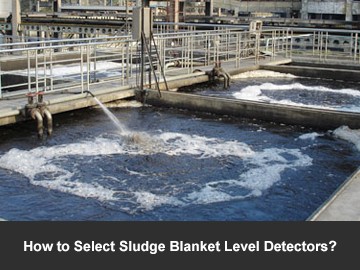How to Choose Sludge Blanket Level Detectors?
With the rise of factories and environment protection, sludge blanket level detectors have attracted more attention than ever before. As a controller and transducer system, they measures the boundary between two material densities, e.g. water and sludge. They are generally used in many industries such as waste water treatment for detecting sludge blanket levels in primary, secondary and tertiary settlement containers.
Considering of where sludge blanket level detectors are used, anti-clogging and anti-fouling function might be the first aspect to consider since they are usually immersed underneath the sludge, the medium measured is viscous. The device should be able to prevent against sludge entry so it can provide accurate and reliable data. Besides, if they are used in non-static containers, make sure their construction made would not allow them to be flushed away with water or sludge. Moreover, hope there is a convenient displaying and operating system that is used to record and save all the parameters which can be changed and downloaded to the controller via your laptop, and to operate via the system instead of field operation, which removes the operations such as patrol or field monitoring from an environment where does not smell good as well as the health and safety considerations that previously used manual techniques accompany.
Knowing that sludge blanket level detectors can be positioned up to 200m (656ft) from the controller, people are concerned with complex installation and debugging. Actually, now these detector manufacturers have considered all the aspects people are worrying about and have made as easiest installation as possible, just following the manual, on-screen menu driven set-up and prompts to enter the application parameters, then the system automatically tracks the sludge blanket interface.






